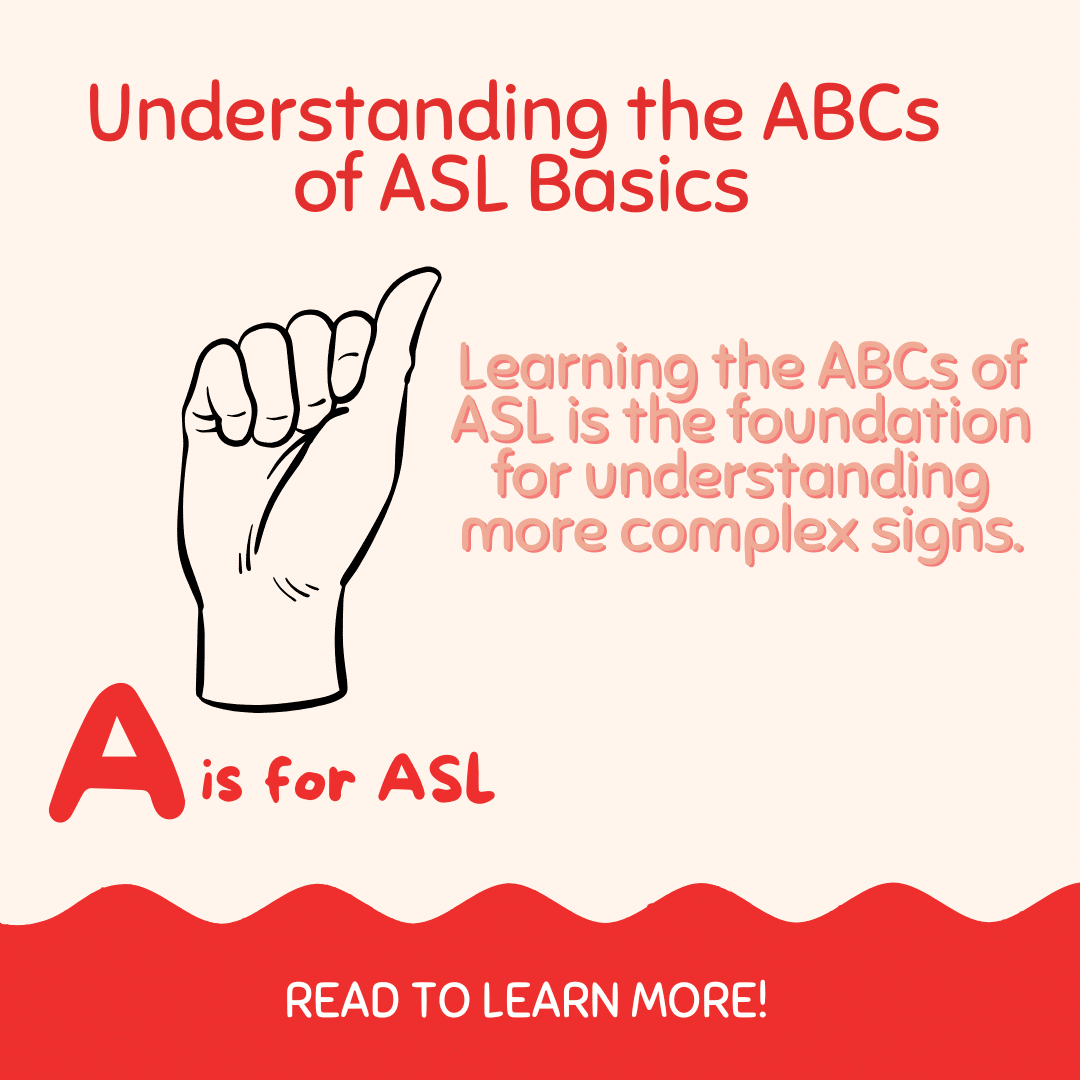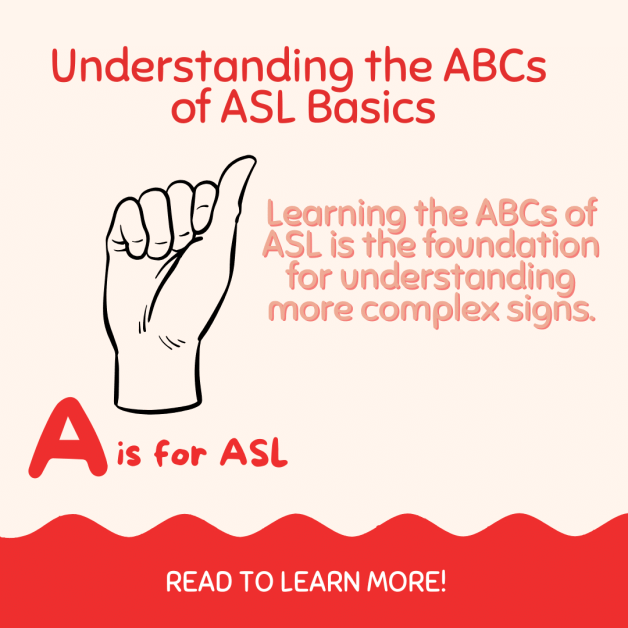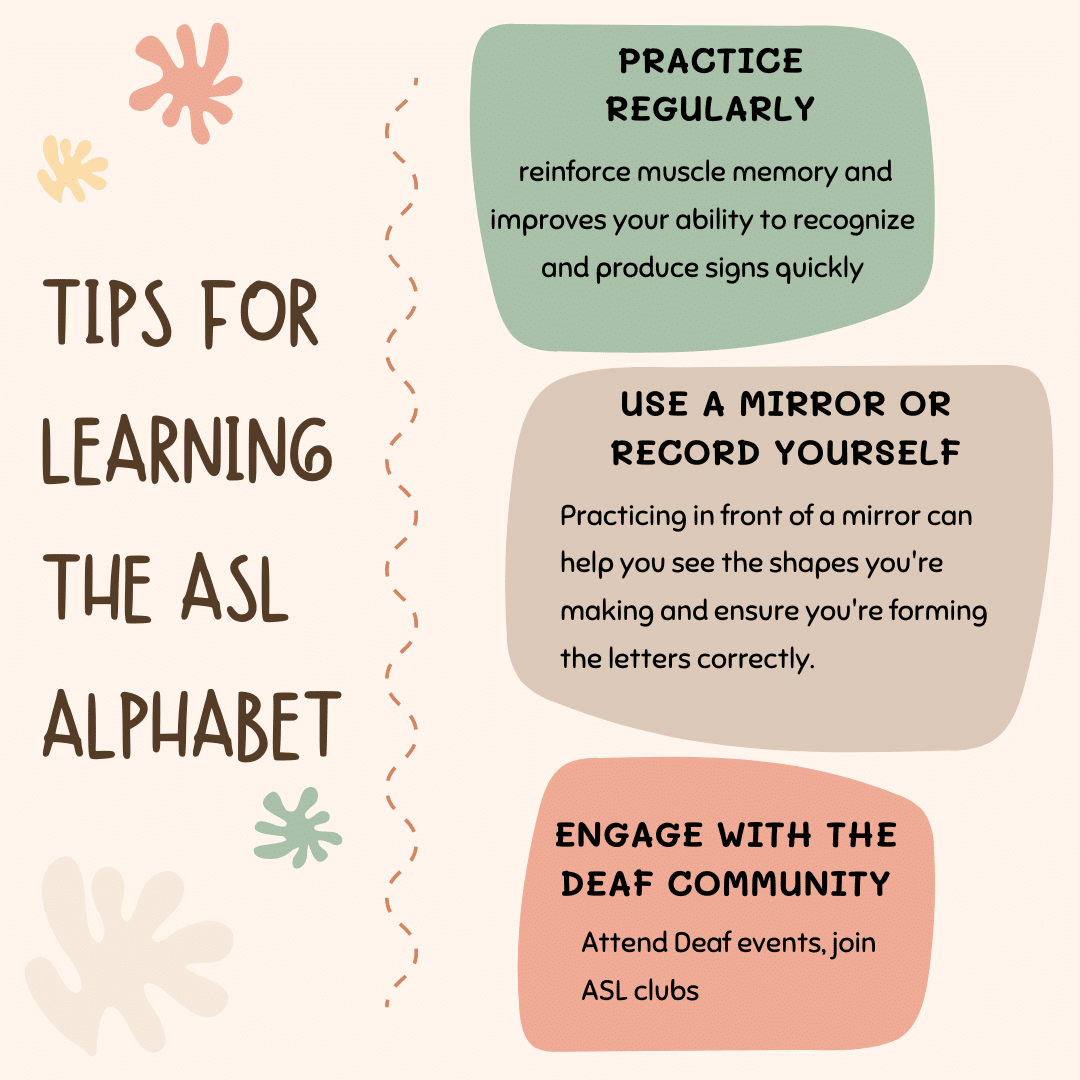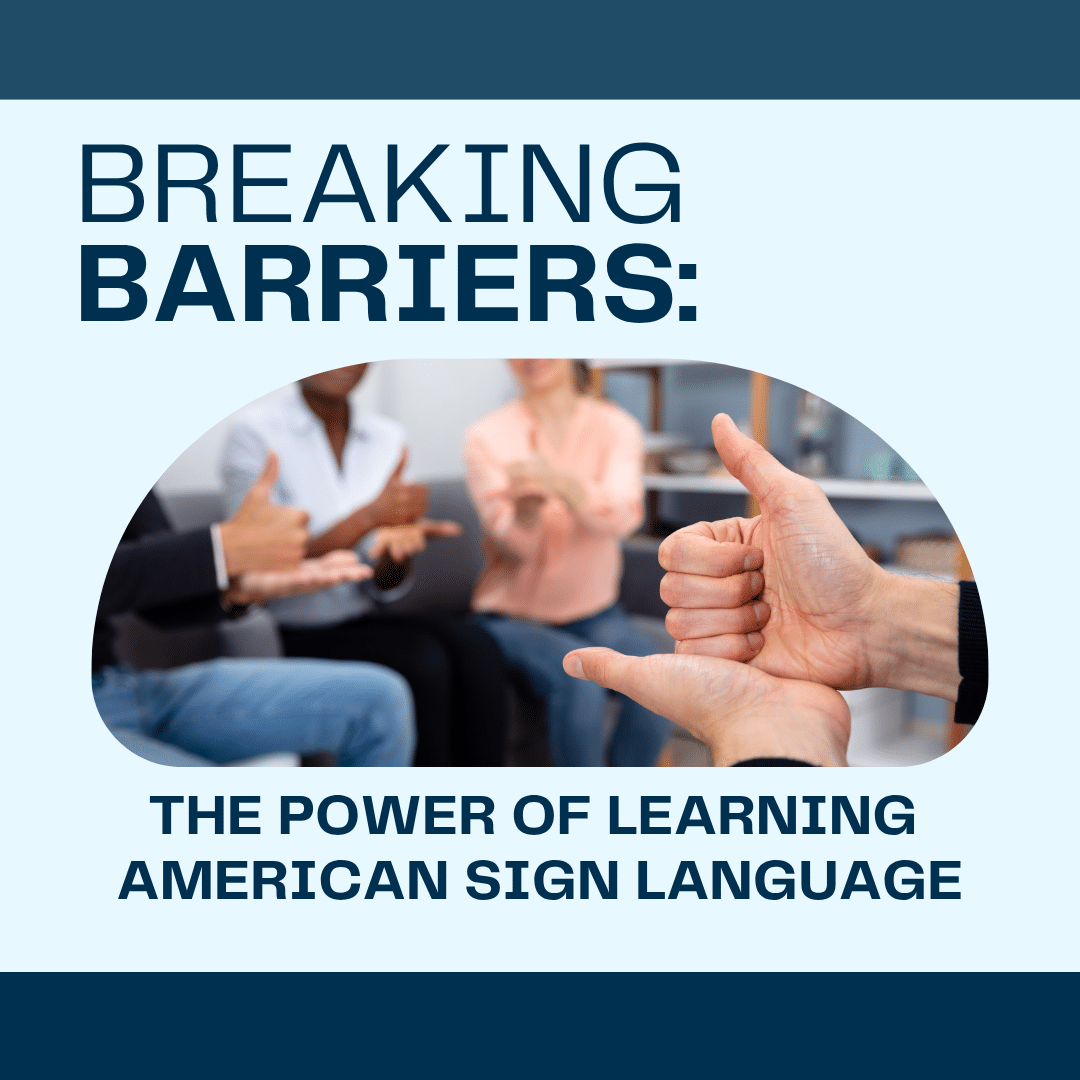
Understanding the ABCs of ASL Basics
- by Start ASL

American Sign Language (ASL) is a vibrant and expressive language used by the Deaf and hard-of-hearing communities across the United States and Canada. Learning ASL not only opens the door to communicating with millions of people who are Deaf or have hearing impairments but also provides a deeper understanding of Deaf culture and identity. One of the first steps in learning ASL is mastering the sign language alphabet, also known as the ABCs of ASL, which serves as the cornerstone for further language development. ASL removes many of the communication barriers that Deaf people face in a sound-centered world, making daily life more equitable and empowering.
What is ASL?
ASL is a complete, natural language that has the same linguistic properties as spoken languages, with grammar that differs from English. Each sign language has its unique syntax, idioms, and cultural nuances, reflecting the communities that use them. While ASL is primarily used in the United States and parts of Canada, other countries have their own unique sign languages, making the world of sign language diverse and fascinating.
ASL is not just a manual representation of English; it is a language in its own right, with its own rules for word order, sentence structure, and grammar. Understanding these differences is crucial for learners to effectively communicate and appreciate the nuances of ASL. Furthermore, facial expressions and body language play a significant role in conveying tone and emotion, adding depth and richness to interactions.
Why Learn the ABCs of ASL?
Learning the ABCs of ASL is crucial for several reasons. First, it serves as the foundation for understanding more complex signs. Many signs in ASL are initialized, meaning they incorporate the handshape of a letter from the alphabet. This makes knowing the alphabet essential for recognizing and forming signs accurately. Additionally, the ASL alphabet is an invaluable tool for bridging communication gaps, allowing you to spell out words that don’t have specific signs, such as names, places, or technical terminology.
Another reason to learn the ABCs of ASL is the ability to engage in fingerspelling, a vital component of the language. Fingerspelling is often used for clarity and emphasis, particularly when communicating complex or unfamiliar concepts. As you become more comfortable with the alphabet, you’ll find it easier to pick up new vocabulary and adapt to different signing contexts. Mastery of the alphabet builds confidence and facilitates smoother communication, enhancing your overall ASL proficiency.
The Importance of Fingerspelling
Fingerspelling is a vital skill in ASL. It enables you to spell out words letter by letter, which is essential for communicating proper nouns or words that don’t have established signs. This is especially useful when introducing yourself, as you can spell your name using the sign language alphabet. Fingerspelling is also crucial in academic or professional settings, where specific terminology or jargon may not have direct signs. Mastery of the ASL alphabet is the first step towards becoming proficient in fingerspelling, providing a flexible tool for clear and precise communication.
In addition to its practical applications, fingerspelling also plays a role in language learning and literacy development. By fingerspelling words, learners can reinforce their understanding of phonetics and spelling in both ASL and English. It also helps in developing fine motor skills and hand-eye coordination, which are important for overall language fluency. As you practice fingerspelling, you’ll gain a greater appreciation for the intricacies of ASL and the ways it can be used to convey detailed information.
The Essence of the ASL Alphabet
The ASL alphabet comprises 26 distinct handshapes, each representing a letter of the English alphabet. This system allows for the spelling of words and names, a technique known as fingerspelling. Mastery of this alphabet is indispensable for situations where specific names or terms, which lack an established sign, need to be communicated.
The ABCs of ASL: A Step-by-Step Guide
The ASL alphabet consists of 26 handshapes that correspond to each letter of the English alphabet. Let’s explore each letter and its corresponding sign. Learning these handshapes provides a foundation for recognizing and producing signs accurately, ensuring effective communication in various contexts.
A to E
- A: Make a fist with your thumb resting against the side of your index finger. This handshape is simple yet foundational, setting the stage for more complex signs.
- B: Extend your fingers upward with your thumb across your palm. This open handshape is used in various initialized signs, making it a versatile component of the ASL alphabet.
- C: Curve your fingers and thumb to form the shape of the letter “C.” This handshape closely resembles the letter itself, aiding in memorization and recognition.
- D: Touch the tip of your thumb to the tips of your index and middle fingers, forming a circle while keeping the other fingers extended. This handshape is crucial for many signs that require precision and clarity.
- E: Curl your fingers over your thumb. This compact handshape is frequently used in initialized signs, emphasizing the importance of mastering the basic alphabet.
F to J
- F: Touch the tip of your thumb to the tip of your index finger, forming a small circle, with other fingers extended. This handshape is visually distinct and used in many everyday signs.
- G: Hold your index finger and thumb parallel to the ground, close together. This handshape requires careful positioning and control for accuracy.
- H: Extend your index and middle fingers and hold them together, with your thumb tucked in. This straightforward handshape is easy to remember and frequently used in initialized signs.
- I: Raise your pinky finger while keeping other fingers in a fist. This handshape is simple yet essential for spelling out words.
- J: Make a fist and draw the letter “J” in the air with your pinky finger. This dynamic motion adds a kinesthetic element to the alphabet, aiding in memorization.
K to O
- K: Extend your index and middle fingers, then place your thumb between them. This handshape is distinctive and frequently used in signs representing people or actions.
- L: Form the letter “L” with your thumb and index finger. This iconic handshape is often one of the first learned by beginners due to its simplicity.
- M: Place your thumb under your index, middle, and ring fingers. This compact handshape requires dexterity and is used in various initialized signs.
- N: Place your thumb under your index and middle fingers. This handshape is similar to “M,” emphasizing the importance of subtle differences.
- O: Curve your fingers and thumb to form a circle. This handshape closely resembles the letter, making it straightforward to learn and remember.
P to T
- P: Similar to the letter “K,” but point your hand downwards. This handshape requires careful orientation for accurate representation.
- Q: Extend your thumb and index finger downwards. This unique handshape is visually distinct, aiding in memorization.
- R: Cross your index and middle fingers. This familiar gesture is easy to remember and frequently used in initialized signs.
- S: Make a fist with your thumb in front of your fingers. This handshape is foundational for many signs, highlighting the importance of mastering the alphabet.
- T: Tuck your thumb under your index finger. This compact handshape is essential for clear and accurate fingerspelling.
U to Z
- U: Extend your index and middle fingers together. This straightforward handshape is easy to memorize and frequently used in initialized signs.
- V: Form a “V” shape with your index and middle fingers. This iconic handshape is often one of the first learned by beginners due to its simplicity.
- W: Extend your thumb, index, and middle fingers to form a “W.” This open handshape is distinctive and used in various everyday signs.
- X: Bend your index finger while keeping other fingers in a fist. This compact handshape requires dexterity and careful positioning for accuracy.
- Y: Extend your thumb and pinky finger. This handshape is visually distinct and used in many initialized signs.
- Z: Draw the letter “Z” in the air with your index finger. This dynamic motion adds a kinesthetic element to the alphabet, aiding in memorization.

Tips for Learning the ASL Alphabet
Practice Regularly
Like any new language, practice is key. Set aside time each day to practice your ABCs. Consistent practice helps reinforce muscle memory and improves your ability to recognize and produce signs quickly. You can use flashcards, apps, or online videos to reinforce your learning. These resources offer diverse ways to engage with the material, making practice more enjoyable and effective.
Use a Mirror
Practicing in front of a mirror can help you see the shapes you’re making and ensure you’re forming the letters correctly. It also helps you become more aware of your facial expressions, which are an integral part of ASL. Facial expressions can convey emotions and tone, adding depth and context to your communication. By using a mirror, you can refine your signing technique and develop a more authentic and expressive signing style.
Engage with the Deaf Community
Engaging with the Deaf community is one of the best ways to improve your ASL skills. Attend Deaf events, join ASL clubs, or participate in online forums to practice your skills and learn from others. Immersing yourself in the community provides valuable opportunities to observe and interact with fluent signers, enhancing your understanding of cultural nuances and idiomatic expressions. Building connections with Deaf individuals fosters a sense of community and mutual respect, enriching your language learning journey.
Conclusion
Learning the ABCs of ASL is an essential step in acquiring proficiency in American Sign Language. It serves as the foundation for fingerspelling and understanding more complex signs. By dedicating time to practice and engaging with the Deaf community, you can become more confident in your ASL skills. Whether you’re looking to communicate with Deaf friends and family, or simply interested in learning a new language, mastering the ASL alphabet is an excellent place to start. It opens doors to new friendships and opportunities and enriches your understanding of the diverse world of sign language. As you progress, you’ll discover the beauty and complexity of ASL, and the vibrant culture it represents.
Start Learning ASL Today!
 Ready to start learning real American Sign Language and not just basic signs? Do you want to be a part of the vibrant Deaf community? Check out our Free ASL 1 Course or our Complete 4-Level ASL Course options and start learning ASL today!
Ready to start learning real American Sign Language and not just basic signs? Do you want to be a part of the vibrant Deaf community? Check out our Free ASL 1 Course or our Complete 4-Level ASL Course options and start learning ASL today!








